By UN Journal Lee Kap-soo
“Lao PDR can serve as a strategic production base for Korean companies aiming to expand into ASEAN, China, and other markets,” said Amb. Songkane Luangmuninthone of the Lao PDR to South Korea on Aug. 6.
In an interview with the Diplomacy Journal, Amb. Songkane Luangmuninthone said, “Lao PDR offers a streamlined, one-stop service for investors and a favorable tax system, making it an attractive destination for foreign investment.”
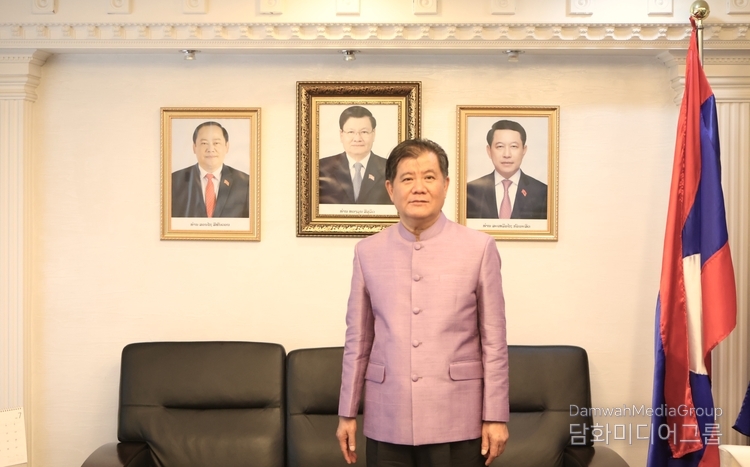
He said, “Therefore, we extend a warm invitation to Korean companies to invest in sectors such as energy, mining, infrastructure, agriculture, ICT, environment, education, and healthcare. Similarly, we encourage Lao entrepreneurs to invest in Korea, particularly in small businesses such as Lao food restaurants, massage services, saunas, and other enterprises.”
Noting that the Lao government set the year 2024 as "Visit Laos Year," Amb. Luangmuninthone said, “Laos has a wealth of natural beauty, cultural richness, and historical sites that may capture the interest of Korean visitors.”
“Apart from our well known attractions for Koreans such as VangVieng and Luang Prabang, there are some highly recommended additional destinations such as Vientiane, Pakse, Si Phan Don, Thakhek and Nong Khiaw.”
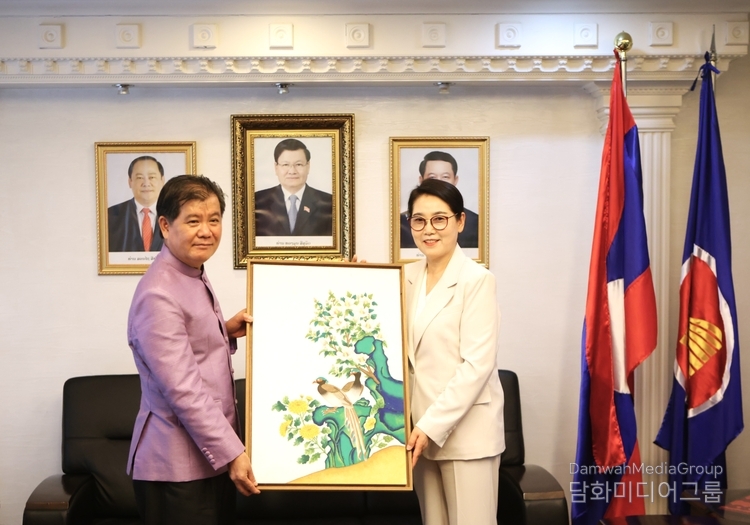
He also said, “We are looking forward to receiving Korean President Yoon Suk-yeol during the upcoming ASEAN-ROK summit to be held in Vientiane this October. On the occasion of the ASEAN-ROK summit, we are expecting to further elevate the ASEAN-ROK Relationship from Strategic Partnership into a Comprehensive Strategic Partnership.”
Following the interview, Cultural Editor Lee Mi-hyung of Diplomacy Journal who is also professor of the Department of Cultural Content, the Institute for Adult & Continuing Education of Myongji University, presented a folk painting depicting Mugunghwa (Rose of Sharon), to Amb. Songkane Luangmuninthone, as a gift.
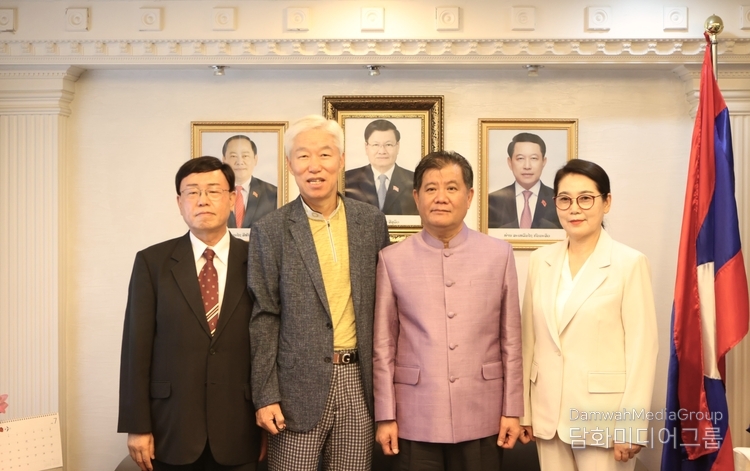
The following is excerpts of the Diplomacy Journal’s interview with Amb. Songkane Luangmuninthone of the Lao PDR.
Question: Diplomatic relations between Lao PDR and South Korea were officially formed in 1995. How has the relationship developed over the period?
Answer: Since the re-establishment of diplomatic relations in 1995, the partnership between South Korea and Lao PDR has flourished, expanding across multiple areas such as economic cooperation, development aid, cultural exchange, education, labor cooperation, and diplomatic engagement. This multifaceted relationship has significantly bolstered bilateral ties.
Our diplomatic journey began with the opening of embassies in Vientiane in 1996 and Seoul in 2001, laying the groundwork for robust collaboration marked by mutual respect and shared goals. Notable milestones include historic visits by Prime Minister Bounhang Vorachith to South Korea in 2002 and President Roh Moo-hyun to Laos in 2004. These visits underscored a deep commitment to fostering strong bilateral relations. More recently, President Moon Jae-in's visit to Lao PDR and Prime Minister Thongloun Sisoulith's visit to South Korea in 2019 reaffirmed this political commitment, highlighting the ongoing dedication to enhancing diplomatic ties and collaborative efforts. We are also looking forward to receiving President Yoon Suk Yeol during the upcoming ASEAN-ROK summit to be held in Vientiane this October.
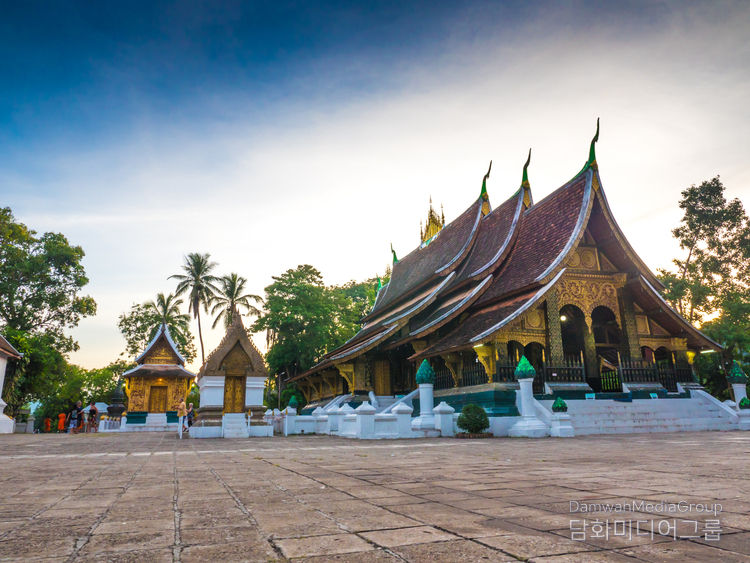
Development Cooperation Development cooperation between Laos and South Korea has significantly strengthened, aligning closely with the Lao Government's development priorities. South Korea, as a key development partner, ranks fifth in terms of development support providing Official Development Assistance (ODA) and loans through the Economic Development Cooperation Fund (EDCF). This assistance targets crucial sectors such as human resource development, sports, healthcare, UXO clearance, agriculture, forestry, and poverty reduction initiatives notably through the Seameul Undong model. These efforts are in harmony with Laos' five-year socio-economic development plan, showcasing a robust and collaborative partnership.
The collaboration extends to successful multilateral efforts, exemplified by the Mekong-ROK cooperation framework, now elevated to a Summit level. Laos has also supported various Korean proposals within ASEAN, further strengthening the partnership on a regional scale. At this year, ASEAN-ROK Summit in October, we are expecting to further elevate the ASEAN-ROK Relationship from Strategic Partnership into a Comprehensive Strategic Partnership.
Q: Please introduce the National Day of Your Excellency's wonderful country. Are there any programs of your embassy planning to celebrate the National Day this year?
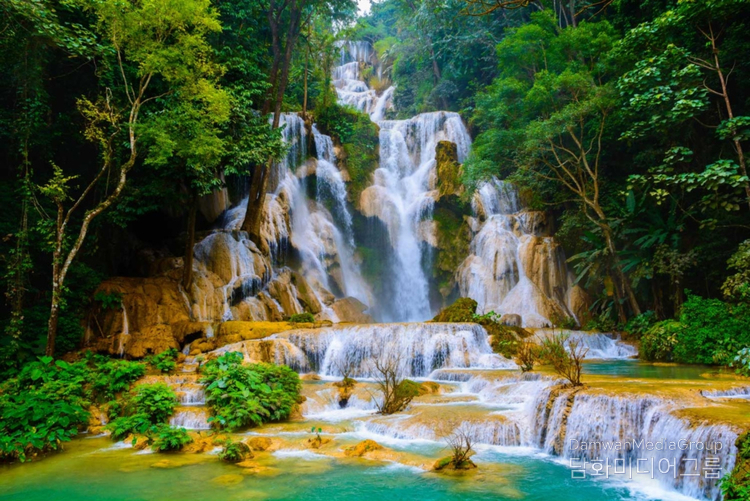
A: As we do annually, our embassy will host an internal gathering to celebrate National Day. We will invite Lao students and community members to the embassy to emphasize the significance of this important day.
The year 2025 will be a milestone for Lao PDR as well as for Lao-ROK relations, as we will celebrate the 50th anniversary of the Proclamation of the Lao PDR and the 30th anniversary of the establishment of diplomatic relations between Lao PDR and ROK. Many activities have been planned throughout next year in both Korea and Lao PDR, starting with a reception in December 2024. This will be followed by a press conference and media engagement in January 2025. February will feature a cultural exhibition showcasing Lao art, crafts, music, and dance. From April to June, educational exchange programs will take place between Korean and Lao universities, fostering cultural and academic collaborations. In July, joint sports events, including football and volleyball matches, will be held to promote camaraderie. The celebrations will culminate in a year-end event in December 2025, summarizing the year's activities with cultural performances and speeches by stakeholders.
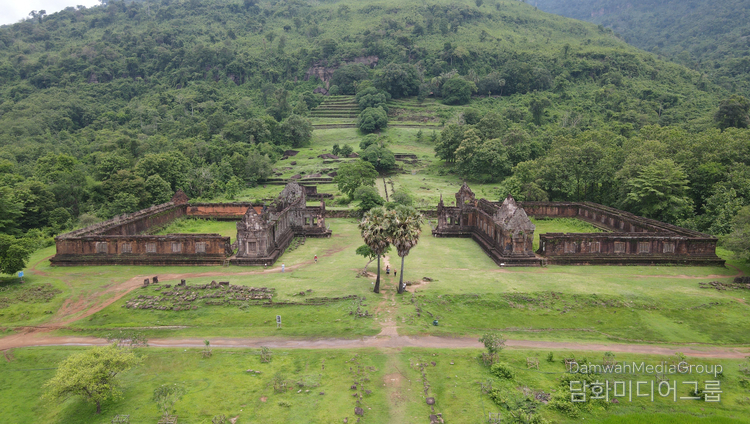
Q: What is the present volume of bilateral trade between Lao PDR and South Korea? In Lao PDR, what kinds of industrial sectors are attractive to Korean investors?
A: Over the past 29 years, trade and investment between Laos and South Korea have grown substantially. South Korea has emerged as a top trading partner, with investments spanning diverse areas, including SMEs and hydropower. The National Chamber of Commerce and Industry of Laos and the Department of Foreign Trade have played vital roles in promoting trade. In 2024, bilateral trade reached approximately 54 million USD.
Lao PDR is endowed with abundant natural resources, including forests, rivers, and minerals such as gold, silver, copper, lead, and manganese. The country also boasts a young and dynamic labor force, reflecting its favorable demographic profile. Additionally, Laos has signed numerous sub-regional and regional free trade agreements, including AFTA, ASEAN+ FTA, and RCEP, and enjoys Most Favored Nation (MFN) status with many developed countries, including the United States and the European Union.
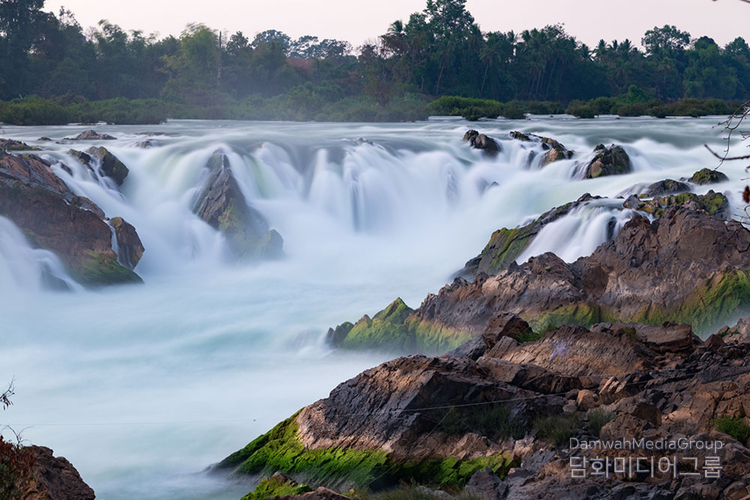
Lao PDR offers a streamlined, one-stop service for investors and a favorable tax system, making it an attractive destination for foreign investment. The country can serve as a strategic production base for Korean companies aiming to expand into ASEAN, China, and other markets. Therefore, we extend a warm invitation to Korean companies to invest in sectors such as energy, mining, infrastructure, agriculture, ICT, environment, education, and healthcare. Similarly, we encourage Lao entrepreneurs to invest in Korea, particularly in small businesses such as Lao food restaurants, massage services, saunas, and other enterprises.
The Lao government supports and provides incentives for the following business sectors: High and modern technology, Clean agriculture, Agro and forestry processing industries, Tourism development, Education, Healthcare, Infrastructure, Banking and microfinance, Modern commercial and trading centers.
Specific zone incentives include: A ten-year tax holiday, followed by an additional five-year tax holiday; A four-year tax holiday, followed by an additional three-year tax holiday; Additional incentives as specified in the SEZ Decree.
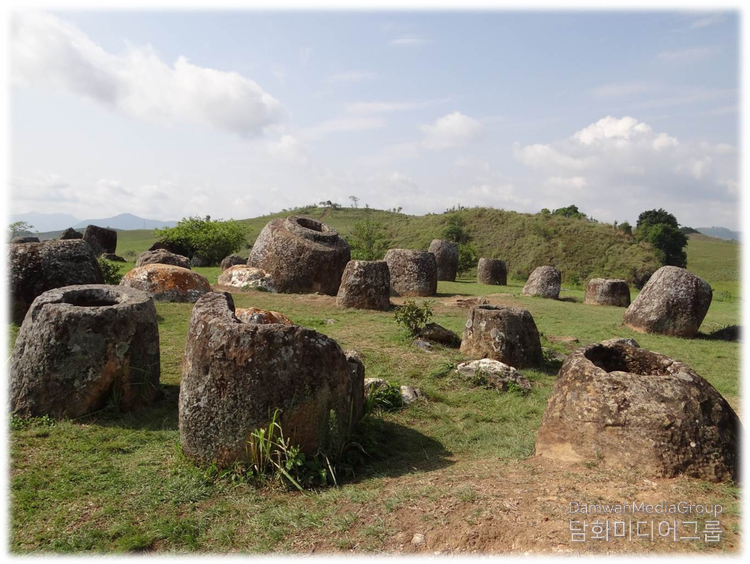
Presence of Korean Businesses: In comparison to neighboring countries such as Vietnam and Thailand, large Korean conglomerates are less active in Laos. However, there are notable Korean companies contributing significantly to the local economy, including: Booyoung Group, which has established Booyoung-Lao Bank, golf clubs, hotels, and other ventures; Kolao Group, which engages in importing automobiles, electronics, furniture, financial services, and construction; Korean Western Power, SK Engineering and Construction Company, and other Korean firms, which play a crucial role in the Lao economy by paying taxes and employing local residents; These businesses demonstrate the potential for successful investment and collaboration between Laos and Korea, contributing to the economic growth and development of Lao PDR.
Despite the significant potential that Lao PDR possesses, there are still many issues that we need to address to further promote trade and investment between our two countries. In particular, we will focus on expanding incentives for investors such as improving the ease of doing business, enhancing the tax regime, and increasing the variety of products we export to Korea including coffee and other agricultural products. Major Korean businesses, which already have a presence in the region, can consider incorporating Lao PDR into a "plus one" business strategy, such as producing parts of their products, thanks to our competitive labor costs and electricity. Additionally, Lao PDR can serve as a production base for the larger markets of ASEAN and China.
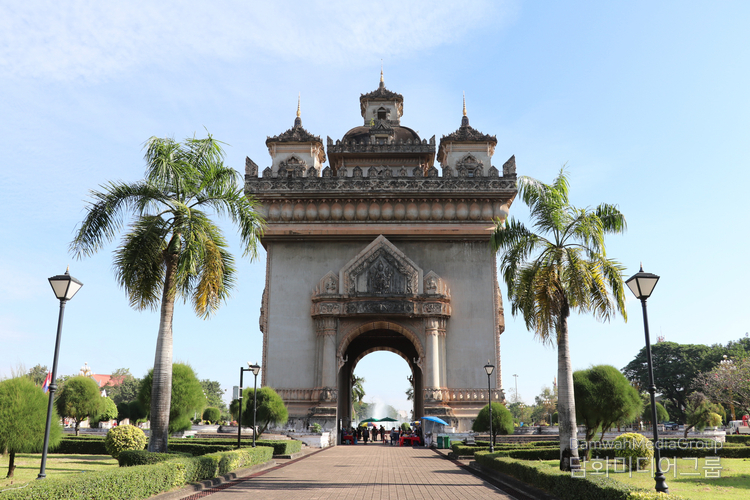
Q: What tourist attractions in Lao PDR do you want to recommend to Korean tourists? Do you have any government programs to attract foreign tourists, including Koreans, to Lao PDR?
A: Laos has a wealth of natural beauty, cultural richness, and historical sites that may capture the interest of Korean visitors. Apart from our well known attractions for Koreans such as VangVieng and Luang Prabang, here are some highly recommended additional destinations that visitors can visit:
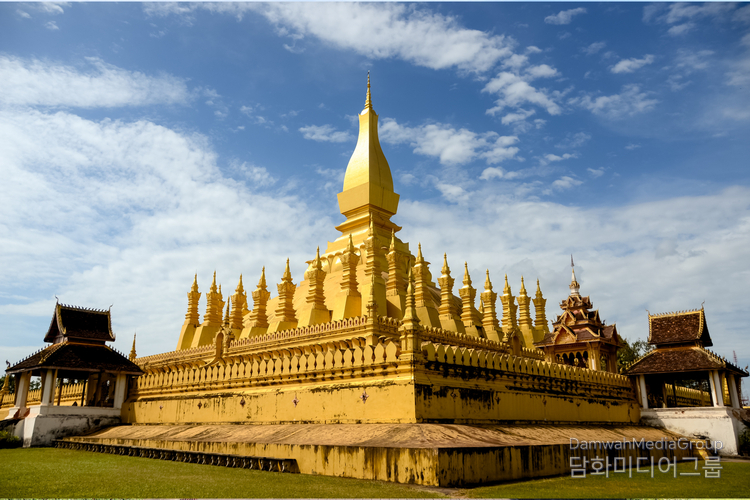
① Vientiane: The capital city, Vientiane, is renowned for its relaxed atmosphere, French colonial architecture, and bustling markets. Situated along the Mekong River, it offers scenic views and ample opportunities for cultural exploration.
② Pakse: Located in southern Laos, Pakse serves as a gateway to the Bolaven Plateau, famous for its coffee plantations and stunning waterfalls. This region provides a more off-the-beaten-path experience. Pakse is also home to the renowned Wat Phou Champasak temple, a UNESCO World Heritage site since 2001.
③ Si Phan Don (Four Thousand Islands): This picturesque region in the Mekong River is known for its tranquility and breathtaking landscapes. Don Det and Don Khon islands are popular among visitors, offering a peaceful retreat with opportunities for cycling and exploring waterfalls.
④ Thakhek: Situated along the Mekong River, Thakhek is known for its limestone karst formations and the nearby Kong Lor Cave. Adventure enthusiasts will enjoy activities such as rock climbing and cave exploration in this area.
⑤ Nong Khiaw: Nestled amidst limestone cliffs along the Nam Ou River, Nong Khiaw offers stunning scenery and a tranquil atmosphere. It’s a great place for hiking, boat trips, and enjoying the natural beauty of northern Laos.
⑥ Xam Neua: This northern town is known for its cultural diversity and historical sites, including the Vieng Xai Caves, which served as a refuge during the Indochina War.
⑦ Luang Namtha: For those interested in ecotourism and trekking, Luang Namtha in northern Laos is a gateway to the Nam Ha National Protected Area. Rich in biodiversity, it offers opportunities for community-based tourism.
⑧ Xieng Khuang: Home to the famous Plain of Jars, Xieng Khuang is a unique and captivating destination. This archaeological site features thousands of large stone jars scattered across the landscape, whose origins and purposes remain a mystery. Additionally, Xieng Khuang offers beautiful mountain scenery, historical sites from the Indochina War, and traditional villages where visitors can experience local culture and crafts.
The Lao government has several programs in place to attract foreign tourists, including Koreans, to Lao PDR. In light of the government's designation of 2024 as "Visit Laos Year," there are several initiatives aimed at boosting tourism:
Special Events and Festivals: Throughout 2024, Laos will host special events, festivals, and cultural activities designed to capture the attention of both domestic and international tourists. These events aim to showcase the unique aspects of Laos' rich culture, traditions, and heritage.
Collaboration with Travel Agencies: To specifically attract Korean tourists, Laos will collaborate with Korean travel agencies to develop and promote Laos-specific travel packages. These partnerships aim to create tailored travel experiences that highlight the best of what Laos has to offer.
Visa Facilitation: The Lao government is offering free visas for 30 days to Korean tourists to make travel more accessible and encourage visits from Korea.
Q: Please tell me what the most rewarding or happiest moment was while you have been working as a diplomat.
A: The most rewarding moment of my diplomatic career was when I first received a Letter of Credence from the President, designating me as an Ambassador, as it is the most senior position for diplomats. I am honored that the country has entrusted me with this very important role and its associated responsibilities. I have made my best efforts to enhance the country's visibility, protect the interests of the people, and simultaneously promote and expand the relations between Lao PDR and the country where I reside.
Q: Please introduce yourself in detail, including your career, family and hobbies.
A: My service in the Ministry began in 1989, starting from the lowest rank at an embassy and progressing to the highest rank. Serving in both bilateral and multilateral diplomacy has provided me with tremendous opportunities to meet many friends in the diplomatic field and people from all walks of life, enriching my worldview and understanding.
I am married to a wonderful wife who resigned from her career and has always supported my work behind the scenes. We have three young adult children who moved around with us during their childhood, presenting both opportunities and challenges for their lives.





